I’ve said it before, miche is a lifestyle. From oversized slices to eggs on toast, bread with beans, grilled cheese, or even stuffing, and croutons — a large loaf on the counter feels like abundance. Optimism. Opportunity. If you’re new to the lifestyle and wonder about how to handle such a mass of dough or, just want a few tips on shaping, scoring, or loading, you can watch me make something similar here. Before the recipe, a few words on surviving in the age of digital bread. Happy Spring from slushy Vermont.
I became a baker before the era of social media. While the internet was certainly around, most of what inspired me came from books. Basil Kamir’s loaves in Bread Alone, earmarked pages in The Complete Book of Breads, Thom Leonard’s sourdough in Artisan Baking Across America. Books made me a baker.
With their images in my mind, I went in search of loaves I could taste and feel. Living in New York City, I had options: Amy’s, Balthazar, Sullivan Street, Pain d’Avignon, or Le Pain Quotidien, to name a few. But more than simply seeing, holding, or tasting other people’s bread, what I wanted most was to make my own.
And so I began, baking away in my bread vacuum, making humble loaves, growing at my own pace, and taking feedback from my little smiling toast eaters.
In time, away from the pressure of social media feeds, internet forums, and comparison culture, I got better. I knew that I had achieved something when my worldly friend Martha tried my brioche coffee cake and declared it “professional quality.” It was a moment that I tucked under a mattress in my heart to use as fuel for the hope that someday, somehow, I might become a professional baker.
Fast forward to the present and I’m thinking about the young bakers of today. Bread has never been hotter. Every time I think we’ve reached Peak Sourdough, I’ve been wrong. Supporting all the fervor, we have websites, YouTube, social media, podcasts, newsletters (sorry!) and more, where we can learn about hard bread, easy bread, quick bread, ancient bread, or bread that isn’t even bread. Our obsession is active.
But sometimes I wonder how, as a young baker, I would have fared in today’s environment. Could I have run the gauntlet, constantly questioning myself? Asking: Is my loaf open enough? Should I mill all my own flour? Is yeast OK? If my bread doesn’t take three days to make, will it be any good? Could I have built my confidence in the face of what at some points feels like an overabundance of judgement? How would I have felt about my tight sourdough loaves, baguettes with no ears, or misshapen brioche? Could I have weathered it all?
I don’t know. But in thinking about it I’m considering what I might tell my younger self, or my kids, or a new baker that’s trying to navigate everything.
Here’s what I keep returning to:
Bake your own loaves. Remember that food is more than yeasted or open-structured, a perfect sourdough maintenance routine, “ears,” or a “grammable” crumb shot — it’s about giving. It’s about nurturing, sustenance, and sharing. It’s about putting food on the tables of strangers and doing it with heart. So, make your bread, pass it around, feed the toast-eaters, and let a generous spirit represent your loaves.
Define yourself with what you are, rather than what you *are not*. Let’s avoid the dogma of absolutes — rather than yeast vs. sourdough, locavore or strictly imported, stay flexible and avoid the extremes. Most of life is in the gray. There, between the binary poles we remain lithe, porous, inclusive, and accepting of differences. Lord knows we need this in 2025.
Let’s bake.
This is a two-day bread. On day one in the evening you’ll set a preferment, mixing whole wheat flour, active sourdough culture, and water. On day two you will begin the bread with an autolyse — a mixture of the flours and water. The autolyse will rest, gaining strength and also extensibility, for at least 30 minutes or, up to four hours. After the autolyse, mix in the preferment, salt, and honey then bulk ferment for a total of five hours. During the first three hours you’ll fold once per hour before leaving it untouched for the last two.
Here’s a sample schedule:
Mix autolyse: 8:00 am
Mix final dough: 12:00 pm
Fold: 1:00, 2:00, 3:00 pm
Preshape and final shape: 5:00 pm
Bake: 6:30 pm
Daily Miche
Stiff levain:
Whole wheat, 152g
Water, 122g (room temperature)
Sourdough culture, 30g
In a small bowl or 2-quart container combine the whole wheat flour, room temperature water, and sourdough culture. Stir together then cover and set at room temperature overnight, 10 to 12 hours.
Final mix:
Bread flour, 456g
Whole wheat, 76g
Whole rye, 76g
Water, 448g (In cool months, use warm water, 95 to 105°F. In hot months, use cool room temperature, 60 to 65°F. Desired dough temperature is 78°F to 82°F.)
On day two, begin with an autolyse. In a large bowl or container, combine the flours and water, stirring with the handle end of a wooden spoon before switching to a wet hand, kneading and pressing until the dough is homogenous. Set the dough to rest for at least 30 minutes or up to 4 hours. The time range is for your convenience. Some days I do two hours, other times it’s longer — do what works for you. (My preference is to place the remaining ingredients on top of the dough so that I don’t forget anything. It’s a habit from bakery work and not necessary but, it also speeds things up when I return to mix the dough.)
*Note, try to find a place where the dough won’t lose too much heat. At my house, my microwave is the warmest spot I have unless I get out a heating pad.
Salt, 18g
Honey, 23g
Stiff levain, 304g
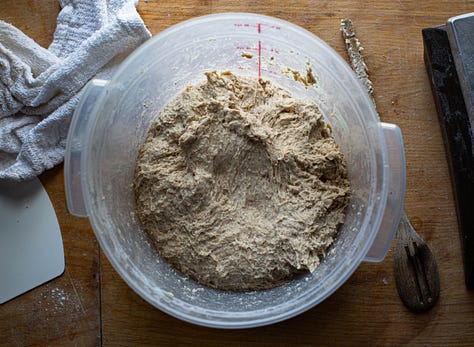

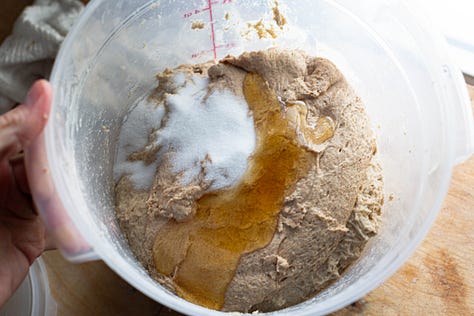
After the autolyse, add the salt, honey, and levain then press, pinch, and knead in the bowl or container to combine, working until the dough is fully homogenous but not necessarily smooth. After mixing, check the dough temperature. When I made this recently my dough after mixing was 73°F, a little chilly for my 63°F house. So, “see something, do something”: I made a little proofer in the microwave and kept it there, coddled and not losing any more heat.


Bulk fermentation will last five hours. During that time you’ll give three bowl or coil folds in the first three hours (at 60, 120, and 180 minutes after mixing). After the third fold (three hours into bulk), you’ll leave the dough untouched for an additional two hours. (Remember, there’s a sample schedule, above.)
After bulk fermentation, dump the dough onto a lightly dusted surface and give it a gentle preshape. Place the dough seam-side-down, cover well, and rest for 15 minutes.
After the rest, shape the dough into a boule and place in a 9” or 10” pie pan lined with a lightly-dusted banneton liner. Lacking a liner, use a lightly-dusted tea towel, or apron.
Proof until it feels soft and slightly marshmallowy. The amount of time for the final proof will vary by season and change with starter activity, dough temperature, and rising conditions. In the height of summer it may be ready after an hour or 75 minutes. On a cold day you may wait three to even four hours. When writing recipes I prescribe a time value in the center of a range. Recently, I loaded after 90 minutes. The loaf I made rose well in the oven — slightly too well — which told me it could have gone a little further, probably two hours. So, during the final proof, touch the loaf, see how it yields to pressure from the pad of your finger, and make your best assessment.
Towards the end of proof, preheat your oven to 475°F with a baking stone and steaming system in place.
Invert the loaf onto a sheet of parchment, score, steam the oven, then load and bake until deeply colored — mahogany to even darker in spots — about 45 minutes. Immediately after loading lower the oven to 450°F. As always, every oven is different, keep an eye on it, rotate as necessary, bake to full color.
Remove and cool fully before slicing.

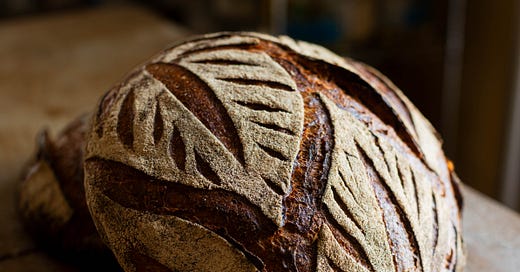


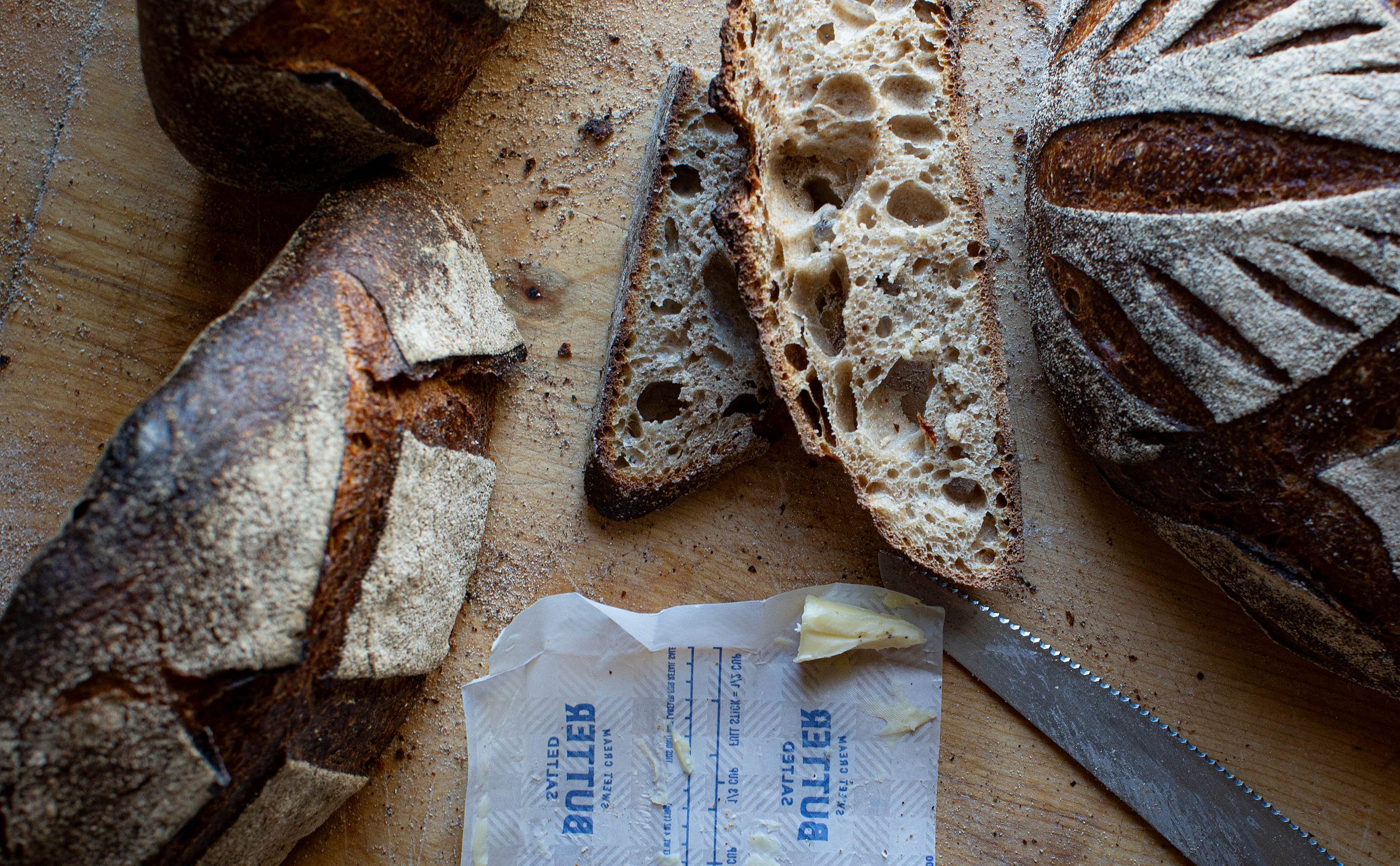

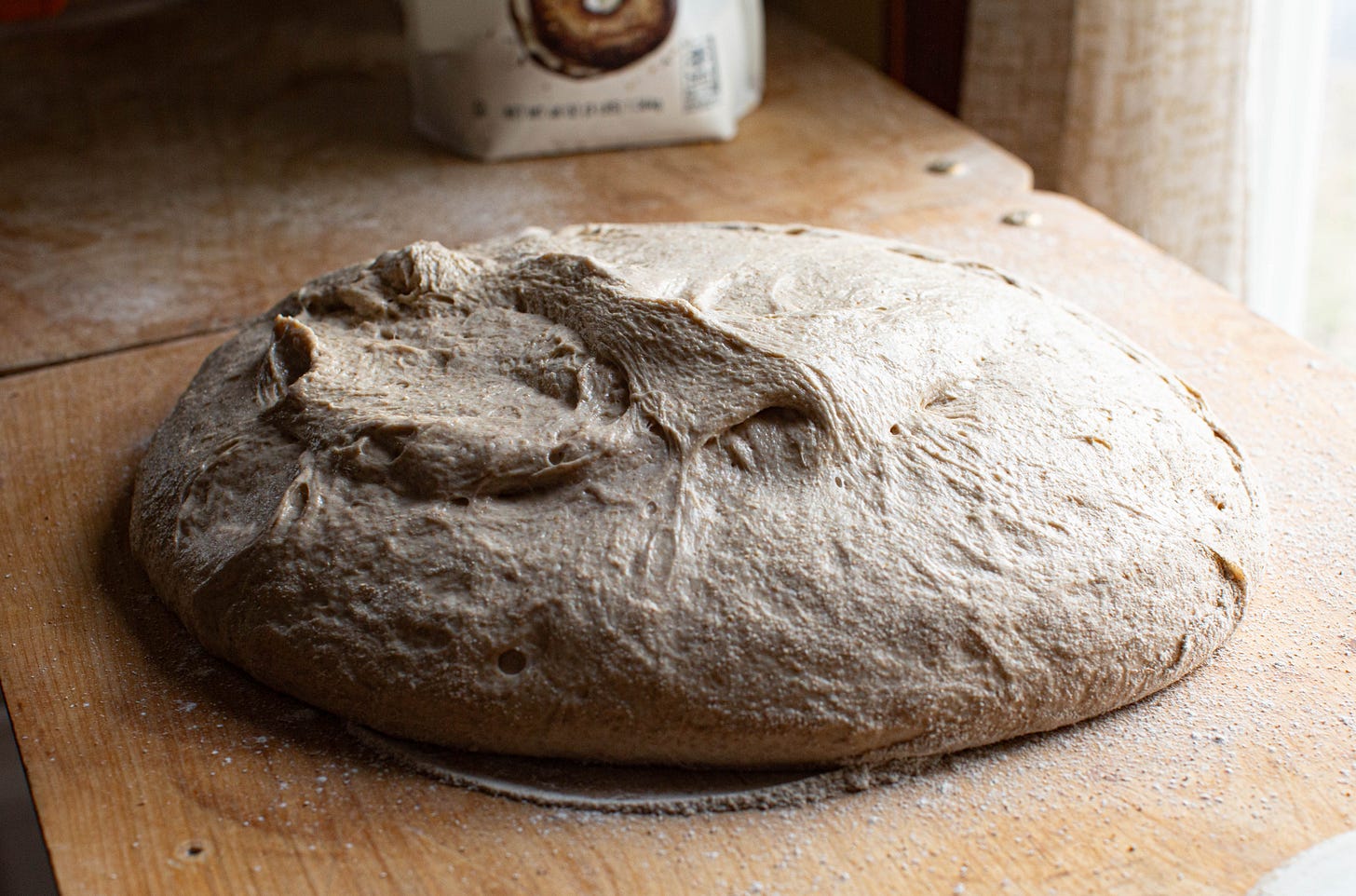
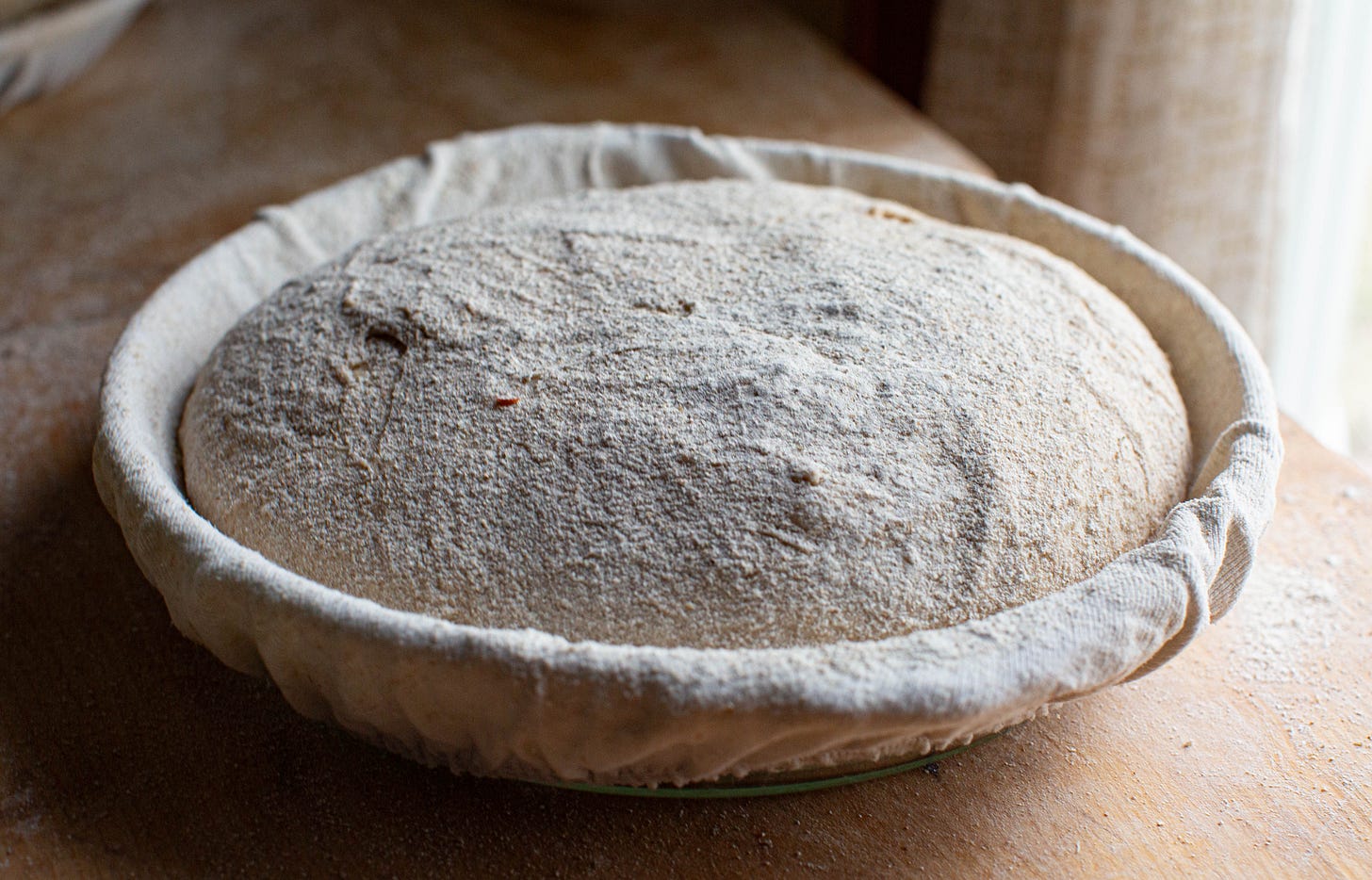
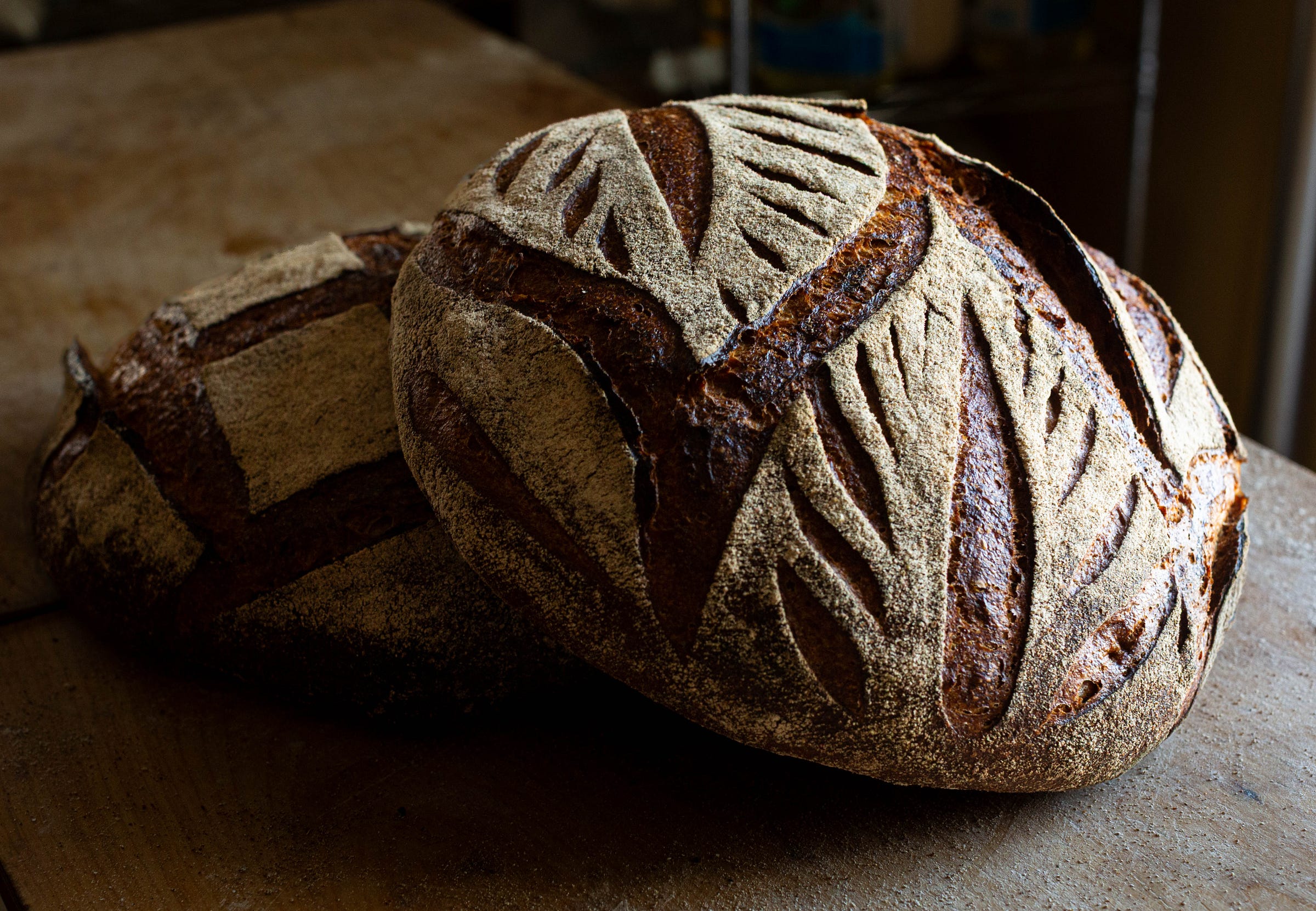
I feel seen ; ). I became a "real, live baker" during the pandemic and, while the information via social media was somewhat overwhelming, sometimes incorrect or even judgmental, it also gave me a pathway to an amazing community of bakers, millers and bread supporters. I truly found my folks there who still provide me with support, inspiration and never ending resources for learning. And, thankfully, I attended a workshop last summer where your advice to "Just bake your bread" gave me the confidence to trust myself a little more and let go of what I don't need when I am baking. Zen and the Art of Baking, perhaps?? Goals. Many thanks, sir.
A new experience for me. The levain was a bit slow in my cold kitchen but then amazing. It was all going so well until the final prove where my lack of anything of an appropriate size made me think I was going to bake a complete failure.
I was so pleasantly surprised (btw had no rye so used spelt… 🤷🏼♀️)
Tasted 😋